Hatchbacks and their sedan counterparts – Click above for high-res image gallery
There's a well-worn cliché that is uttered periodically by just about every product planner and PR wonk in the auto industry – one that's been dutifully parroted by the journalists and enthusiasts that surround them, and it goes something like this: "Sorry, fellas, Americans just don't buy hatchbacks." Typically, that chestnut is trotted out whenever an automaker is compelled to explain why a particularly desirable new hatchback won't be sold in U.S. showrooms. Thing is, this commonly accepted bit of wisdom isn't as true as we've been led to believe.
The hatchback accounts for 60 percent of Fiesta sales.
Just ask Ford, who announced today that its new-for-2011 Fiesta is selling more in five-door guise than it is in its more traditional four-door sedan format. According to figures the automaker has sourced from Ward's Auto, the jaunty hatch accounts for over 60 percent of the Fiesta's sales. Little wonder, perhaps, as Ford has seemingly devoted the Fiesta's entire marketing budget to that particular bodystyle.
As a further statement of faith in the viability of the utilitarian bodystyle, the Blue Oval is readying its 2012 Focus in both sedan and five-door formats, with the two-door Focus coupe being discarded in favor of the hatchback – a configuration unavailable since 2007. Ford sales analyst George Pipas nutshells what he sees as a growing trend:
Ford isn't alone in its bid to disprove that consumers are inherently averse to two-box designs because they feel they're cheap and frumpy – sensible as opposed to stylish. Autoblog recently inquired with a number of automakers who offer entry-level models available in both hatchback and sedan bodystyles, only to find out that in many cases, bubbleback models are outselling their trunked counterparts."American car buyers have grown accustomed to the convenience of hatch bodystyles after years of owning SUVs and crossovers. Combined with a generation of younger drivers who have been exposed via the Internet to popular high-performance hatchback offerings in Europe and Asia, we may be seeing the beginning of a shift in buyer acceptance of hatchbacks."
Continue reading...
Toyota's Yaris subcompact has been a segment mainstay since 2006, selling between 63,246 units (2009) to 101,581 (2008) units. The model split? Hatchbacks sell more by "around a 60-40 ratio, versus the Sedan," says brand spokesperson Curt McCallister. Sales of the hatchback have been so strong, in fact, that Toyota added a five-door model as a companion to the existing three-door for 2009, though the sales mix was actually about the same before the model was added.
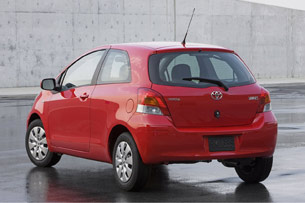
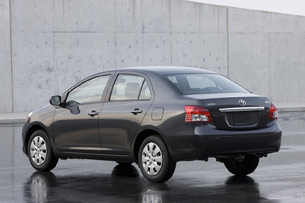
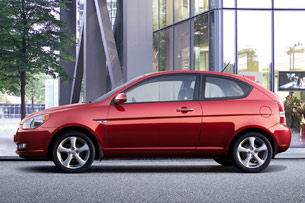
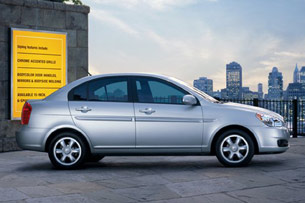
The hatchback fares even better at Hyundai, where spokesman Dan Bedore points out that the low-cost Accent three-door makes up an astonishing 77 percent of model sales. Bedore also notes that the Korean automaker has been so buoyed by the bodystyle's success that they are readying a production version of their sporty Veloster concept for 2011.
The picture is similarly rosy over at Nissan, where the Japanese automaker's Versa has seen a consistent two-thirds of its model mix favor the five-door hatchback since the model was introduced in 2008. Through July of 2010, the liftback has actually outsold the notchback 22,031 to 8,897 – that's 71.2 percent of all Versa sales. This, despite the fact that the five-door model actually starts at a much higher price point ($13,520 versus $9,990) owing to its significantly longer list of standard features. Nissan's Senior Manager of Public Relations, John Schilling, hypothesizes that "the hatch is probably seen as sportier looking and more versatile than the sedan, which probably accounts for its larger sales numbers."
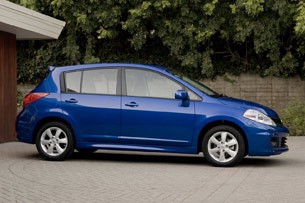
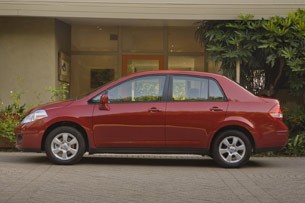
Subaru officials tell us a similar tale – their Impreza 2.5i has also done well with its hatchback configuration. Over the last four years, the five-door has accounted for between 43 and 48 percent of the model's sales. As of July of 2010, the hatchback model had actually pulled ahead of the sedan, selling 7,682 units versus the sedan's 7,518.
How about General Motors? Margaret Brooks, Chevrolet's Small Car Manager, confirms that Aveo sales are generally "pretty evenly split" between five-door and sedan formats. Through August, the Aveo5 hatchback has outsold the sedan 51.7 percent to 48.3 percent.
Even Suzuki of America's modest numbers spell out a similar story. According to media relations manager David Boldt, the company's SX4 model mix skews approximately 75 percent five-door. Through the end of June, Crossover and Sportback models found their way in to over 6,600 garages, while the sedan and Sports models have chugged along at just over 2,000 units. Boldt notes that the five-door has been on sale for one year longer than the Sport sedan model, yet he also says that "Almost three years after the launch of the four-door, you'd think the recognition factor would be fairly similar."
And it isn't just the cheap and cheerful that have fared surprisingly well. BMW's premium-priced Mini brand has been hugely successful in America with a lineup that's nearly wholly comprised of hatchbacks – in fact, some analysts suggest their heady sales figures single-handedly caused executives at other automakers to reconsider the genre, sparking a number of new models for the American market. There's little doubt that Fiat's diminutive 500 would never have been green-lighted for the U.S. if Mini's Cooper lineup hadn't blazed a trail first.
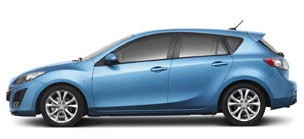
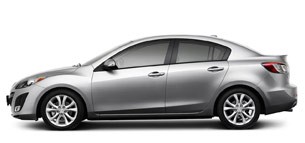
Of course, there are also a number of big-volume examples to the contrary – the Mazda3 five-door only accounts for about 25 percent of the popular line's mix, but it's also only available in pricier "s" trim with a larger engine. (A base Mazda3 s hatch starts at $19,685 while the Mazda3 i sedan can be had for as little as $15,450.) Interestingly, the high-performance Mazdaspeed3 is only sold in five-door format, presumably because global sales of the niche model favor the hatchback bodystyle. Company officials clearly believe in the sales potential of hatchback models, however, as they've just introduced the 2011 Mazda2 exclusively in liftback design.
In Camp Volkswagen, the Jetta has outsold the Golf hatchback since time immemorial – a reality that has long flummoxed the automaker's German leadership because demand for the hatchback has consistently outstripped the sedan everywhere else in the world. VW execs have seemingly finally given in, however, awarding its Stateside outpost a 2011 Jetta designed specifically for U.S. consumers (read: bigger, decontented and less costly), so it will be interesting to see what happens to the Golf's sales.
Aerodynamics have played a part in improving the hatchback's fortunes.
It bears noting that there have been slow-selling premium hatches as well – Volvo's funky C30 hasn't really moved the Swedish brand's needle and the Audi A3 five-door has only recently started to pick up the pace from its humble sales total. But that isn't stopping automakers from trying to build a following for high-end hatches – Audi will market its premium-priced A7 liftback here next year, Porsche's Panamera is already lighting up the sales chart, and Aston Martin can't build enough of its shapely new Rapide. Lexus has high hopes for its 2011 CT 200 h hybrid, and Saab is said to be working to bring a next-generation 9-3 hatchback to market, as well as an even smaller 9-2 teardrop hatch.
Of course, one market that has remained notoriously immune to the hatchback's charms in recent years is the family car segment. Back in the '80s and early '90s, virtually everyone playing in the mid-size sandbox offered at least a hatchback or wagon variant – if not both. Chevrolet, Ford, Honda, Mazda, Subaru, Toyota – even MItsubishi offered more than just a notchback body. Those days are gone, however, and nobody has taken up the torch with a new model. VW's Passat Wagon is due to expire soon, and Mazda took a pass on renewing the 6's slow-selling Touring and Wagon derivatives. But with a new crop of young buyers stepping out of small hatches or others stepping down from their SUVs, how long will it be before an automaker muscles in and breaks the cycle?
The hatchback's share of the U.S. remains under 10 percent.
Interestingly, aerodynamics have probably played a part in improving the hatchback's fortunes in North America. The second-generation Prius adopted the teardrop, Kammback shape largely because of its inherent efficiency. In the process, Toyota created a style icon, something that has arguably served to make the hatchback bodystyle not just more accepted, but more desirable. Ironic, then, that Ford officials suggest that "behind the shift in bodystyle and content levels are younger customers who have no memory of the gas crisis – and its attendant automotive sacrifices – that early hatchbacks were associated with." If this hypothesis is true, young people are getting turned on to hatchbacks for the same reason their parents left them – they speak of frugality and efficiency instead of luxury and indulgence.
On balance, the hatchback's share of the entire U.S. market remains under 10 percent, so liftback lovers shouldn't break out the balloons and kazoos just yet. But the old yarn about Americans refusing to buy three- and five-door models appears to have quite a few holes in it. Sales figures of many models suggest a different narrative: American consumers will line up for well-designed, well-priced and well-marketed cars no matter what bodystyle they come in.
The practical – and increasingly stylish – hatchback is alive and kicking in America.


Sign in to post
Please sign in to leave a comment.
Continue